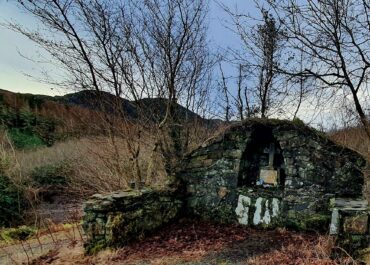Graveyard, Magheracar, Co. Donegal
In the quiet pasture lands of Magheracar, County Donegal, lies a slightly elevated patch of ground that once held a church and burial ground, though you'd never know it today.
Graveyard, Magheracar, Co. Donegal
The site, catalogued as DG109-002 in archaeological records, has vanished so completely that by the time the Ordnance Survey mapped the area in their third edition, not a single trace remained visible. What was once a place of worship and final rest has been transformed over the centuries; first into a late 19th-century farmhouse, and now occupied by a modern bungalow.
When archaeological testing was required in 1999 before construction of the current bungalow, five trenches were carefully excavated across the site, yet they revealed nothing of the church’s foundations or the burial ground that once accompanied it. The only physical evidence of this lost ecclesiastical site comes from a handful of intriguing artefacts kept by the property owner: a fragment of a small rotary quern used for grinding grain, a stone basin, and perhaps most remarkably, an architectural fragment featuring distinctive ribbed moulding typical of late 12th or early 13th-century doorways. This decorative stonework bears striking similarities to pieces found at the nearby Assaroe Abbey, suggesting connections between these religious sites during medieval times.
These modest fragments, discovered but undisturbed by modern development, represent all that remains of what was likely once a thriving religious centre serving the local community. The site’s complete disappearance reminds us how easily Ireland’s medieval landscape can be erased, leaving only scattered clues and careful archaeological records to tell the story of places that were once central to daily life in rural Donegal.


